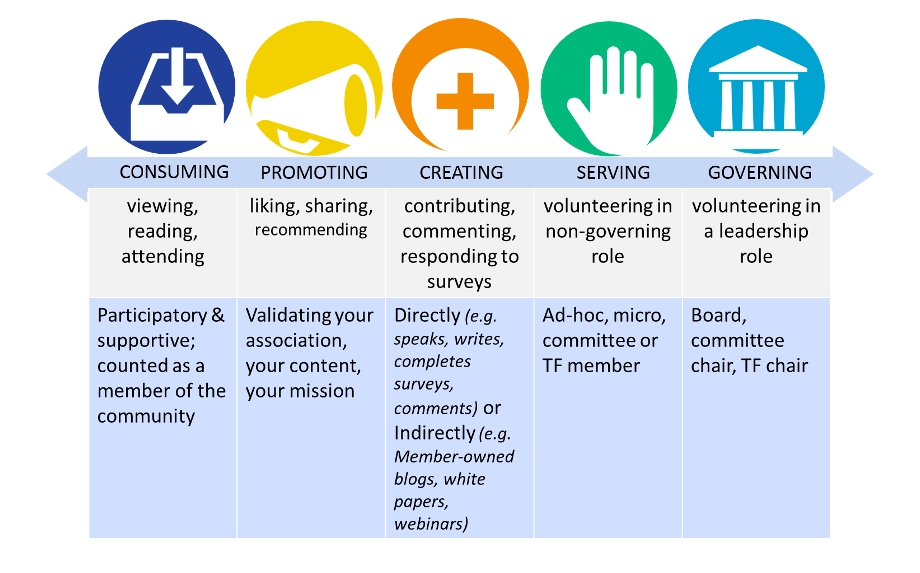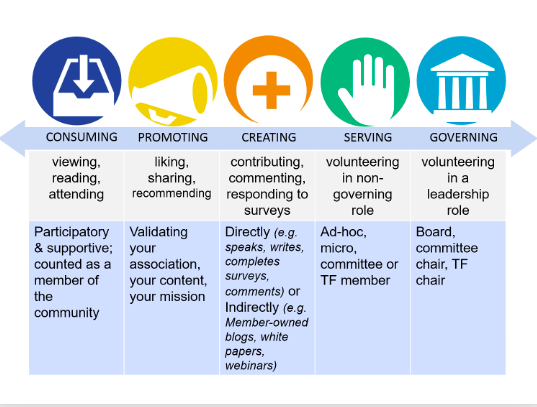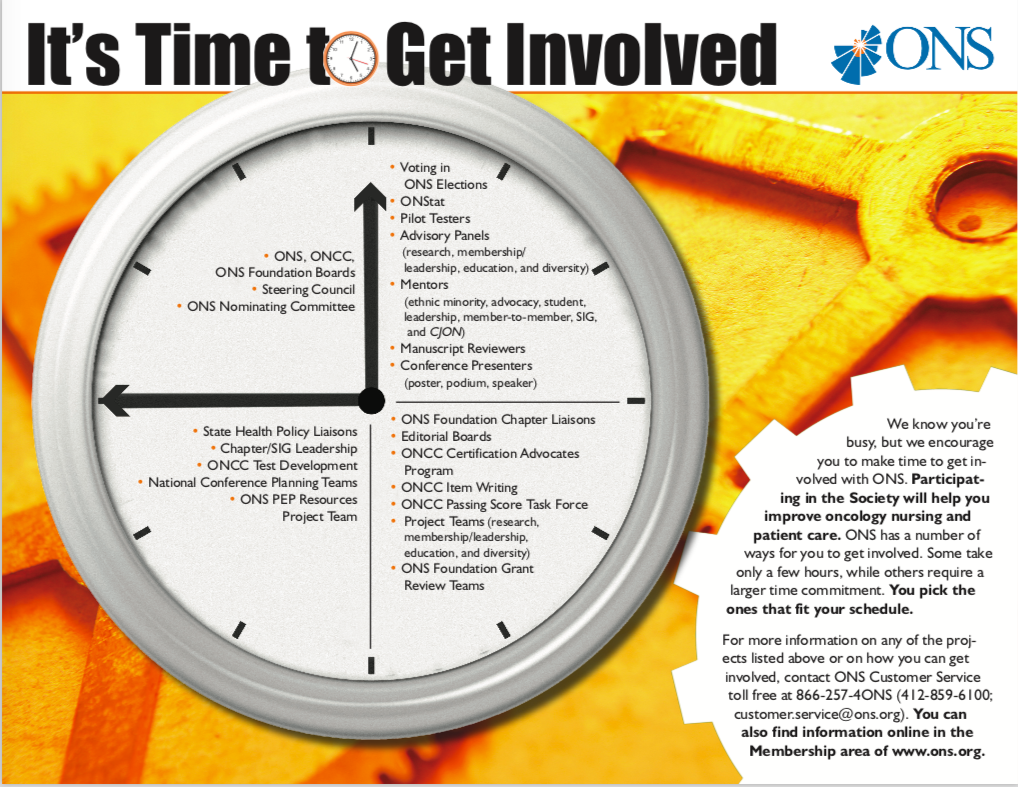“Those who can, do. Those who can do more, volunteer.”
During our April 16 Higher Logic Learning Series webinar on volunteerism in honor of National Volunteer Week (#NVW2015), Peggy Hoffman and I were unable to get to all the questions in our allotted hour. So we’re hitting the rest now:
How do you find out what rewards the volunteers like/want?
EWE: Ask them! And it’s OK to be forward about it: “What would be a meaningful way for us to show our appreciation for your contributions?” But hopefully you – or someone else on your staff – are getting to know them at least a little during the course of their volunteer service, so you’ll have some insight into their personalities, hobbies, and key issues. Run with the fact that you know that she’s a dedicated cyclist or he’s a Washington Nationals super-fan. Also remember to scale level of thank you to level of contribution – in other words, someone who acts as a greeter at one of your chapter events probably shouldn’t receive the same type of reward as the person who served as chair of your Board of Directors for two years.
PMH: And ask others who know the individual. And build out your database to include age as a demographic category (which is a clue to understanding what generations people fall into), interest tracking, and robust tracking of volunteer roles.
One of our biggest concerns with creating all these additional volunteering options and levels of engagement is that they put the burden on the staff to organize and direct. Any suggestions?
PMH: Realize that there is a difference between start-up mode (more effort) and ongoing management (less effort). While you’re in transition, test procedures, technology, communications channels, etc., to find the ones that will best balance staff/volunteer time and effort.
EWE: It’s true – excellent volunteer management takes time, effort, and attention. That’s why many leading nonprofit organizations have one or more formal volunteer coordinators as full time staff positions. The thing is, if you add it up, your volunteers are saving your organization a tremendous amount of time and money by their unpaid labor. You owe it to them to provide appropriately professional support.
Can you share some ideas for micro-volunteering?
EWE: Opportunities for micro-volunteering are almost limitless. You can ask people to suggest topics for your newsletter, magazine, blog, webinars, or conference, or vote on topics others have suggested, a la sxsw. You can ask people to rate an article or comment on a blog post. You can ask people to vote in your elections. You can ask people to post a question or an answer to your LinkedIn group, private community, or listserv. You can ask people to make a personal call to a new member, welcoming her to your association. You can ask people to serve as welcome ambassadors at your chapter events, or as meeting buddies for first-timers at your annual conference. You can ask attendees to share their thoughts at a Town Hall meeting at your next event. You can ask people to take a poll or short survey. You can ask people to share your content through Facebook or Twitter. You can ask them how they’d like to contribute to your association. Truly, you’re only limited by your imagination.
PMH: Great question! I’d also like to share two blog posts I’ve written on this topic: Walking the Walk of Deep Volunteer Engagement and Micro-Adhocracy, Macro-Engagement, both of which offer additional suggestions.
Are there best practices around how much recognition to give at a given level of service? For example, should a micro volunteer get more than an email thank you?
PMH: Suffice to say there is no “best practice.” It is true you want to scale your recognition efforts, so think of it this way: appreciate equally and acknowledge in the context of the contribution, so follow the rule of saying thank you early and often to all volunteers. If the task was micro (say reviewing an article), can you include a note acknowledging their contribution? If the volunteer was part of the host committee at your annual conference, a special badge is appropriate. As the task requires more time or effort, keep the thanks early and often, but scale up the recognition.
Studies on volunteer satisfaction suggest that for micro or episodic volunteers, recognition is most meaningful and beneficial when it coincides with the service, so an immediate thank you (on-site and post-event or activity) is a best practice. Doing this trumps any “gift.” As you plot out your recognition plan, focus on early, heart-felt thanks that specifically references how the volunteer made a difference.
The 2013 Volunteer Canada Volunteer Recognition Study showed that for 80% of volunteers, the most effective recognition was hearing about how their work has made a difference. 70% of volunteers said they would like to be recognized by being thanked in person on an ongoing, informal basis.
(By the way, least preferred ways of thanking volunteers in this study included: banquets, formal gatherings, and public acknowledgment in newspapers, radio, or television.)
Do you have any “HR program” that manages a lot of these processes that you have talked about today, and best practices?
EWE: If by “program” you mean software, just as there are loads of AMS, CRM, CMS, and LMS systems, so there is a plethora of volunteer management packages. Capterra runs a continuously updated rating system, as does Software Advice.
Now from the perspective of staffing for volunteerism, many associations opt for the “Joe staffs committee X and Mary staffs committee Y” model, which works OK for a traditional committee structure. But if you want to move more in the direction of ad hoc/micro/virtual volunteering, you need a volunteer coordinator. That’s a model that’s much more common in service organizations, like your local Food Bank, where they likely have a whole team of people whose entire job is to recruit and work with volunteers.
So how do you make the transition? Find someone on staff who’s interested in this and has at least a little capacity, and start with one task or project. Assuming that staff person does well and likes it, and the experiment goes well for the volunteers, too, you can start building more of these kinds of projects under the staff person’s direction, and gradually move her into a volunteer coordinator role, as the volume of work merits it. And then you might want to encourage her to become a Certified Volunteer Administrator, but that’s a whole ‘nother ball of wax, so to speak.
PMH: Elizabeth is right; there are many volunteer management packages (my favorite is ivolunteer.com) and you’ll want to ask Higher Logic about their new Volunteer Manager. But for best practices, the challenge is that most of the formal materials are geared to service organizations. To create or evaluate your own, start by looking at the service organizations for a checklist. Then conduct a satisfaction survey to find out where you’re doing well and uncover weaknesses. Two go-to sources are: Tobi Johnson’s resource portal and the 501 Commons Volunteer Management Guide.
Building an online audience is so critical for us. How do we recognize our influencers for their contributions to audience building?
EWE: Again, I would urge you to talk to them and ask what they would value. “Top contributor” or “most valuable contributor” badges or ribbons, leaderboards, and feature contributor profiles are popular choices in many online communities, and they’re relatively easy to implement. But if you have someone who contributes actively because she wants to help people or build community, she’s probably not interested in “star status” – in fact, it may be in direct opposition to what she’s trying to accomplish.
Fill in the blank: Volunteers are….
EWE: Volunteers are AWESOME! No, seriously – they tend to be our most dedicated members who renew year after year, and they also tend to care deeply about the association, otherwise they wouldn’t be working for it for free. Which is really important to remember when yet another volunteer comes to you with yet another great idea you lack the budget or staff resources to implement.
Volunteers are also often UNDERAPPRECIATED. Staff can get into this, “What do you want from me now? Why are you creating more work for me? For the love of God, would you just leave me alone for 10 minutes?” mindset. Take a deep breath, take a walk, take a Xanax if you have to, but realize that the association doesn’t belong to the staff alone – it belongs to the staff, the volunteers, the members, the customers, and the other stakeholder audiences all together, and try to find your inner Zen.
Do you have any suggestions for how to convert millennials into volunteer leaders?
PMH: Two thoughts: (1) Implement an effective orientation and training program and they will convert; and (2) tap your chapters and components as farm teams. In my chapter, we just booted out all but two Boomers and brought in Xers and Millennials in an overhaul. There were limited opportunities for training, but the stakes aren’t as high in one of your component groups – it’s a safer environment.
EWE: Pair them with Boomers in a cross-mentoring relationship. The two generations are relatively inclined to like each other and get along (think about how many Millennials list their parents among their closest friends), and if you can help create an environment of mutual respect and information sharing, the Boomer mentors can help prepare the Millennial padawans with what they need to know and do in order to be successful, while the Millennials can share their unique perspectives and experiences to help keep the association leadership structure current and relevant.
And don’t be afraid to give your Millennial volunteers a chance. You might not want to run out and elect a 22 year old chair of your Board of Directors, but give her a shot to run a small project or a task force. The only way to get experience is to, you know, get experience. As she gains more skill and confidence, start scaling up the size or profile of the projects you ask her to run. And don’t equate lack of experience with lack of aptitude or interest. It’s like developing staff, only without paychecks.
I’m looking to build engagement around volunteer positions. Any advice?
EWE: As in, “why did these people volunteer if they didn’t intend to fulfill their commitments?” In the moment, intervene as soon as you notice a problem. And remember from CAE training: volunteer to volunteer. You need to talk to the volunteer in charge of your slacker, alert that next up the chain person to the problem, and ask the supervisor to talk to the person who’s not living up to her commitment. The conversation shouldn’t be accusatory: start by asking what’s going on. She might have a valid reason she hasn’t delivered yet. Maybe she wasn’t clear on what she was supposed to do, or on when it was due, or she’s waiting for something she needs from someone else (paid staff or volunteer) to move forward, or something has changed in her personal or professional situation. Discover the problem first, then focus on fixing that problem. If it’s unresolvable, remember that it’s OK for a volunteer to quit, and it’s also OK to fire a volunteer.
To prevent this from happening the future, think about the whole issue of the volunteer continuum Peggy talked about in the webinar, where you can test people’s level of commitment in small scale jobs before you assign them large scale jobs. Also consider auditing your orientation and training program to make sure you’re giving people accurate and sufficient information so they know what they’re committing to do, and they have the skills and information they need to complete those tasks on time.
PMH: Or if what you’re asking is: “how do I recruit people the first place?”, try breaking the jobs that are going unfilled down into smaller roles. Also, you should create action statements for the job, which directly tie the job to an outcome. Often, “no thanks” really means “I don’t understand the job and don’t have time to ask for clarification.”
In order to get and keep volunteers, create a strategy around getting connected or getting involved. This is essentially expanding your online “Volunteer page” to a “How to get Involved” portal. ASAE’s Get Involved portal is a good example in that is shows how to position volunteering options. It also draws you in, and lets you sign-up and opt-in for alerts easily. That, combined with a membership onboarding process that matches members to opportunities, will grow the culture of volunteering in your association. Once you have them plugging in, create a regular communication with them. Use updates, badging, and volunteer highlights to stay top-of-mind for them. And train your leaders to be talent scouts and talent mentors.
“Don’t ever question the value of volunteers. Noah’s Ark was built by volunteers; the Titanic was built by professionals.”



